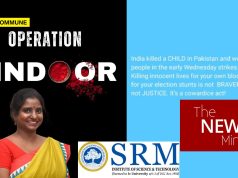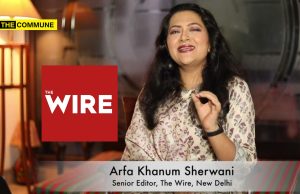
On 1 August 2024, the Supreme Court ruled that it is permissible to sub-classify within the Scheduled Castes (SC) and Scheduled Tribes (ST). Justice Pankaj Mithal emphasized that reservations should ideally benefit only the first generation within these categories, and a periodic review should assess whether the second generation has integrated with the general category.
The 7-judge constitution bench, with a 6:1 majority, determined that sub-classifying reserved category groups is lawful. Justices N Santosh Hegde, SN Variava, BP Singh, HK Sema, and SB Sinha, who had previously ruled in the EV Chinnaiah case that castes listed in the Presidential Order under Article 341(1) formed a homogeneous group and could not be further divided, have been overruled by this decision.
Justice Pankaj Mithal noted that both pro-reservation and anti-reservation protests have frequently become violent, disrupting national peace and stability. However, he clarified, “In mentioning these disturbances, violence, litigation, and issues, I am not suggesting that the effort to uplift the downtrodden should cease or that the reservation policy should be abandoned. Instead, the focus should be on how to effectively implement measures for equality and development, how to identify the truly disadvantaged classes, and what actions should be taken for their upliftment.”
Justice Mithal highlighted that statistical evidence shows the benefits of reservation are not reaching the most disadvantaged. For instance, about 50% of students from the most backward classes drop out before completing Class V, and 75% before completing Class VIII, with the dropout rate rising to 95% at the high school level. Consequently, only the children of more affluent or urbanized castes benefit from higher education and reservation policies. He observed, “The better-off among the backward classes often occupy most of the reserved seats, leaving the most disadvantaged with little access to these benefits.”
Justice Mithal remarked that ancient India did not have a caste system but instead had a system based on people’s professions, talents, qualities, and nature. He said, “I am not a religious scholar, nor do I claim deep knowledge of scriptures, although I have read the Bhagavad Gita and Ramcharit Manas. From my understanding, there was no caste system in primitive India; rather, there was categorization based on profession, talent, and characteristics”
Over time, the varna system was misconstrued as a caste system. This social defect emerged as varnas became associated with birth rather than individual qualities, contradicting the teachings of the Gita.
He wrote, “There was no caste system in ancient India. The varna system was misconstrued over time as a caste system. With the adoption of the Constitution, we aimed to create a casteless society, but in our efforts to uplift the depressed and backward classes, we inadvertently perpetuated the caste system.”
Justice Mithal argued that while reservation aims to uplift the downtrodden, its implementation often reinforces casteism. He said, “Reservation is intended to help improve the status of OBCs, SCs, and STs. However, suggesting alternative methods of support for these groups often results in accusations of being ‘Anti-Dalit.”
He cited a passage from Nani Palkhivala’s autobiography, which critiques caste-based reservations for perpetuating caste divisions, noting, “At the risk of being labelled ‘Anti-Dalit,’ I reference Palkhivala’s criticism, which aligns with my view that reservation policies may perpetuate casteism.”
He summarized that,
- The reservation policy, as established by the Constitution and its amendments, needs a re-evaluation. New methods should be developed to assist and uplift SC/ST/OBC communities. Until such methods are in place, the current reservation system can continue, including the possibility of sub-classification.
- The Constitution does not support a caste system, and society has largely moved toward being casteless. However, reservations are provided for SC/ST/OBC groups for specific purposes. Any support should be based on economic status, living conditions, or vocation rather than caste.
- Reservation benefits should be limited to the first generation. If a family member has already benefited and improved their status, the second generation should not receive these benefits.
- There should be periodic reviews to ensure that those who have benefited from reservations and achieved parity with the general category are no longer included in the reservation system.
Chief Justice of India DY Chandrachud highlighted that historical evidence shows the SCs are a heterogeneous group, not a homogeneous one. Article 14 permits sub-classification if it is supported by rational and empirical data, especially given the systemic discrimination faced by SCs and STs.
The court’s majority decision now permits sub-classification within reserved categories, overturning the EV Chinnaiah case ruling. SCs and STs are acknowledged as heterogeneous rather than homogeneous groups, so sub-classification must be backed by solid data. The Centre and States are authorised to identify and designate the most backward classes within the SC/ST categories.
(With inputs from Live Law)
Subscribe to our channels on Telegram, WhatsApp, and Instagram and get the best stories of the day delivered to you personally.




